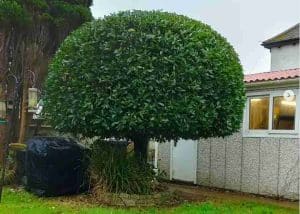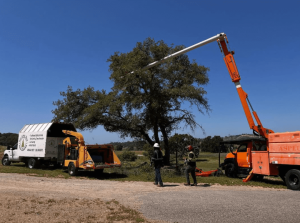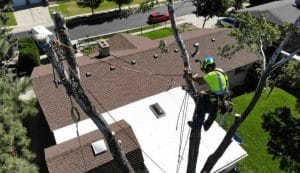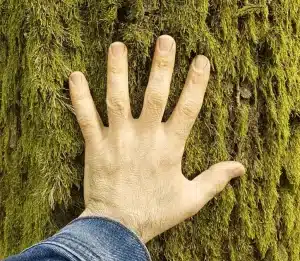Trees can be a beautiful and beneficial addition to your property in Ormond Beach. They provide shade, improve air quality, and add aesthetic appeal to your landscape. However, there are times when trees can become a danger. A tree that is unstable or diseased can pose a threat to your home, your family, and even your neighbors. In this article, we will walk you through how to determine if a tree is dangerous and needs to be removed, focusing on signs that homeowners in Ormond Beach should look for. We will also cover the steps you can take to address these concerns safely and effectively.
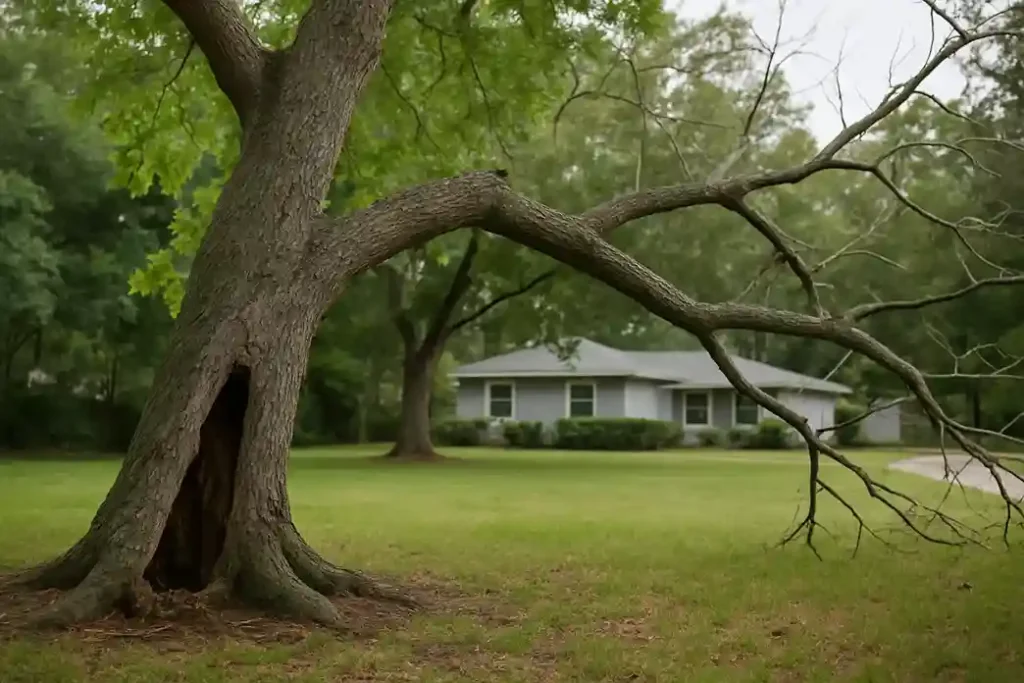
Table of Contents
Introduction: Why Tree Safety Matters in Ormond Beach
Ormond Beach is a beautiful coastal city known for its lush vegetation and scenic landscapes. The trees in the area are part of what makes the environment so appealing, but not all trees are safe. Over time, trees can become weak, diseased, or structurally compromised. In severe cases, they can fall, causing significant damage to your home or surrounding structures.
With hurricanes and storms frequently affecting the area, it’s crucial for homeowners to ensure their trees are in good health. By understanding how to identify dangerous trees, you can take proactive steps to protect your home, family, and property.
Signs of a Dangerous Tree
Recognizing the early signs of a dangerous tree is essential to prevent costly damage or injury. Here are some common indicators that a tree might need to be removed:
Leaning or Tilting Trees
A tree that is leaning significantly to one side may be in danger of falling. This could be due to root damage, soil erosion, or an imbalance in the tree’s weight distribution. If the tree is leaning toward your home, driveway, or a neighbor’s property, it’s critical to have it inspected immediately. Even small tilts can worsen over time, especially during stormy weather in Ormond Beach.
Dead or Dying Branches
Dead or dying branches are often the first sign that a tree might be in trouble. If you notice branches that are broken, brittle, or missing leaves, they may pose a serious threat. During a storm, these branches can easily fall, causing damage to property or posing a risk to people below.
Look for signs such as:
- Branches that are excessively dry or brittle
- Cracked or broken branches
- Lack of new growth or leaves in some areas of the tree
Hollow Trunk or Decay
A healthy tree has solid, sturdy wood. However, if the trunk of the tree is hollow or showing signs of rot, the structural integrity is compromised. Over time, the decay can spread, making the tree unstable. You may notice mushrooms or fungi growing around the base, which indicates internal decay. If left unchecked, this type of damage can make the tree dangerous, especially during high winds.
Cracks or Splits in the Trunk
Vertical cracks or splits in the trunk can signal that a tree is weakened. These cracks can form due to weather events, poor health, or pests. Large cracks are particularly dangerous as they can affect the tree’s ability to stand upright. If you spot cracks in the trunk or large limbs, it’s a red flag that the tree may no longer be safe.
Local Weather and Its Impact on Trees
Ormond Beach experiences tropical storms and hurricanes, especially during the hurricane season. This severe weather can put additional stress on trees. High winds, heavy rainfall, and flooding can all contribute to the weakening of trees, particularly if they already have structural issues.
Trees that are near the coast may also suffer from saltwater damage, which can weaken the roots over time. During storms, these trees are more likely to fall, causing damage to homes or vehicles. It’s important to consider the local climate when assessing the risk of your trees.
Assessing Tree Location: Is the Tree Close to Your Home or Property?
Even if a tree appears healthy, its location plays a significant role in determining whether it poses a risk. Trees that are too close to your home, garage, power lines, or other structures can be hazardous if they fall or drop branches. A tree that is growing near a fence or sidewalk can also cause damage if its roots push through the ground and crack concrete.
When evaluating a tree’s risk, take into account:
- The distance between the tree and your home
- Whether the tree is leaning toward your property
- The health of nearby trees that could potentially fall on your property
- The potential for root damage to underground pipes or foundations
The Role of Professional Tree Inspectors in Ormond Beach
While some tree damage is obvious, other problems may not be immediately apparent to the untrained eye. A professional tree inspector can evaluate the health and stability of your tree and provide expert advice on whether removal is necessary. These specialists can check for hidden decay, pest infestations, and structural issues that may not be visible from the outside.
In Ormond Beach, hiring a certified arborist can provide peace of mind. They will have the experience to accurately assess tree risks and help you make an informed decision about removal.
Benefits of Removing Dangerous Trees
Removing dangerous trees has several benefits, particularly in preventing potential damage and reducing risk to your property. Here’s why tree removal might be necessary:
- Prevents Property Damage: A falling tree can cause major damage to your home, car, or outbuildings. It can also harm fences, power lines, and other structures on your property.
- Protects People: Trees with weak branches or trunks can pose a serious safety hazard, especially during storms. Removing these trees reduces the risk of injury.
- Enhances Landscaping: Sometimes, a tree that’s dangerous is also an eyesore. Removing it can open up space for better landscaping or allow for new, healthy trees to be planted.
Steps to Take if You Identify a Dangerous Tree
If you believe you have a dangerous tree on your property, here are the steps you should take:
Step 1: Assess the Situation
Take a close look at the tree from a safe distance. Examine the trunk, branches, and surrounding soil for signs of leaning, decay, or instability. If the tree seems to be a hazard, don’t approach it too closely.
Step 2: Call a Professional
Contact a local tree removal service in Ormond Beach. A certified arborist will be able to assess the tree’s condition and provide recommendations for removal if necessary. They will also be equipped to safely handle tree removal, reducing the risk of injury or further damage.
Step 3: Obtain Estimates and Plan Removal
Ask for estimates from a few tree removal companies. Choose a service with experience in dealing with potentially dangerous trees, and ensure they have the necessary equipment to remove the tree safely.
How to Prevent Future Tree Problems
While some tree issues are inevitable, there are steps you can take to minimize the risk of future tree problems:
- Regular Inspections: Have your trees inspected at least once a year, especially before hurricane season.
- Proper Tree Care: Water your trees adequately and ensure they receive proper nutrients. Avoid damaging the tree’s roots during construction or landscaping work.
- Pruning: Regularly prune dead or dying branches to prevent them from falling. Proper pruning can also help improve the tree’s structure and longevity.
Conclusion: Keeping Your Property Safe in Ormond Beach
Tree safety is an essential aspect of maintaining your property in Ormond Beach. By recognizing the signs of a dangerous tree and addressing any issues early on, you can prevent costly damage and keep your home and family safe. Remember, if you’re unsure about the health of a tree, it’s always best to consult with a certified arborist. They can help you determine the best course of action to protect your property from potential tree hazards.
By staying proactive and maintaining your trees, you can enjoy the beauty and benefits of nature without worrying about the risks. check more blog post

FAQs
What are signs a tree needs removal in Ormond Beach?
In Ormond Beach, signs that a tree needs removal include leaning toward structures, dead or brittle branches, hollow trunks, and visible cracks or splits. These indicate structural instability and potential danger, especially during storms.
How can I tell if a tree is dangerous near my home?
To assess if a tree is dangerous near your home, look for leaning, large dead branches, hollow areas in the trunk, and cracks. Trees close to structures or power lines are especially risky and may require professional evaluation.
Should I remove a leaning tree in Ormond Beach?
Yes, a leaning tree in Ormond Beach can be hazardous, particularly if it’s leaning toward your home or driveway. It’s advisable to consult with a certified arborist to assess the risk and determine if removal is necessary.
How do storms affect tree stability in Ormond Beach?
Storms in Ormond Beach can weaken trees, especially those with existing issues like rot or leaning. High winds and heavy rain can cause unstable trees to fall, leading to property damage or injury.
What should I do if I find a dangerous tree on my property?
If you find a dangerous tree on your property in Ormond Beach, it’s important to contact a local tree removal service. They can assess the tree’s condition and safely remove it if necessary to prevent potential hazards.
How can I prevent future tree problems in Ormond Beach?
To prevent future tree problems in Ormond Beach, have your trees inspected regularly, especially before storm season. Proper watering, pruning, and avoiding root damage during construction can help maintain tree health and stability.

